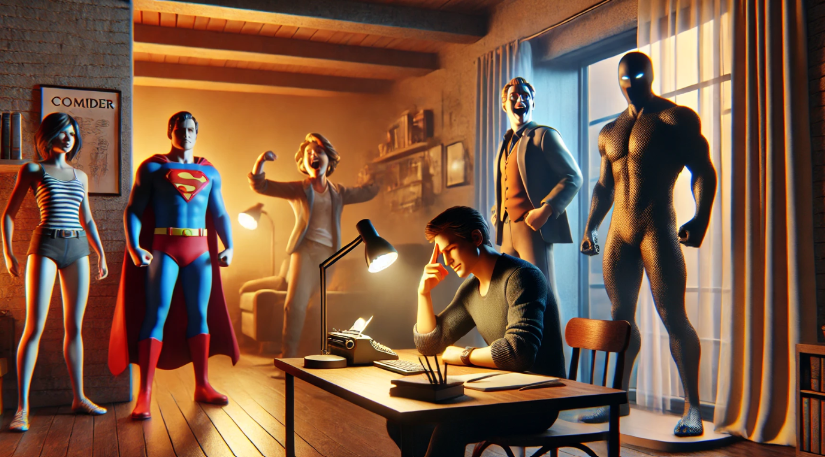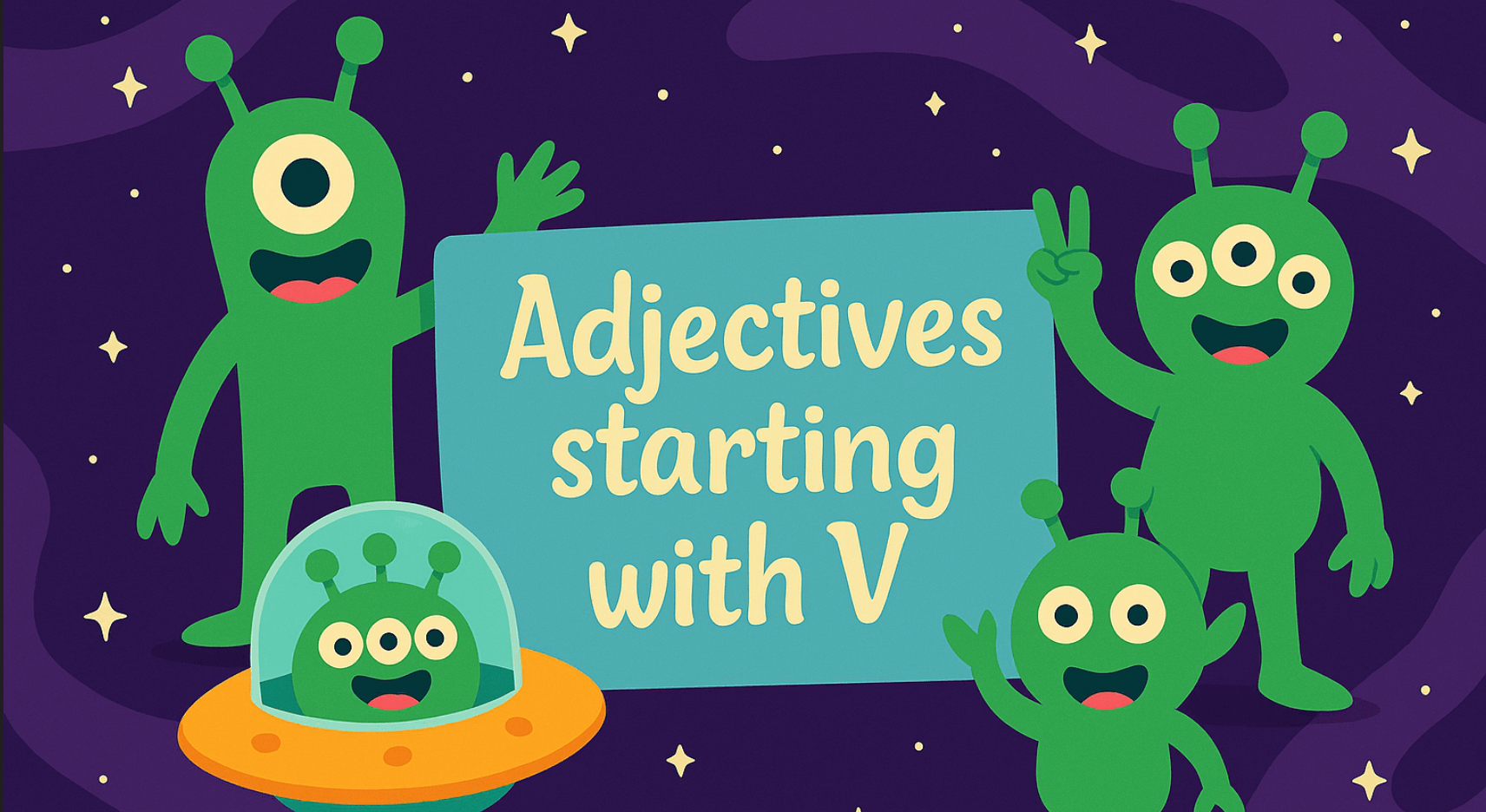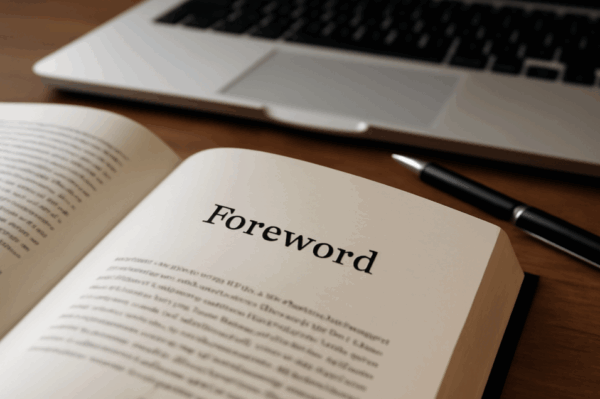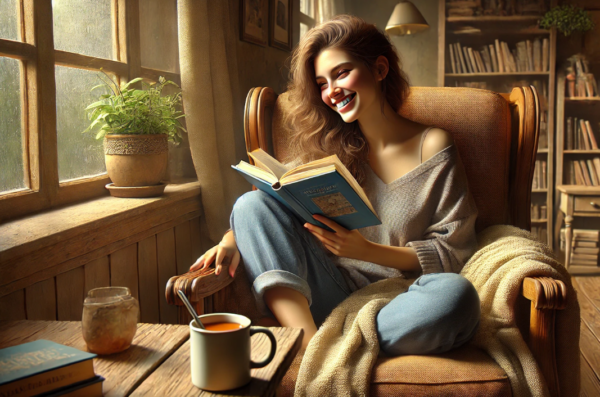What would a story be without its characters? A plot with no one to carry it, a setting with no one to inhabit it—essentially, just a few scattered events waiting for meaning. Characters are the ones who give stories depth, emotion, and, let’s face it, something to root for.
Whether it’s a hero on a quest, a villain plotting their next move, or a supporting friend offering wisdom or comic relief, characters are what connect us to the story. They drive the narrative forward, shape the themes, and evoke feelings that linger long after the last page is turned.
In this article, we’ll explore the different types of characters that writers use to craft engaging and memorable stories. From the familiar archetypes to more nuanced roles, we’ll break down how each type functions in a story and why understanding them is key to creating compelling narratives. Let’s get into the characters who turn a good story into a great one.
What Are Characters in Writing?
At their core, types of characters in a story are the individuals who drive a narrative forward. They are the personalities, voices, and perspectives that bring a story to life. In writing, characters can take on many forms—human, animal, or even something fantastical like a talking tree or a robot with emotions. What matters is their role in the story: to interact with the world around them, face challenges, and create the emotional connection that draws readers in.
Characters are more than just plot devices; they shape the themes, tone, and pacing of a story. Through their actions, decisions, and growth, characters help convey the deeper meaning behind the narrative. Whether they’re experiencing conflict, striving for a goal, or overcoming personal hurdles, it’s the characters that allow us to engage with the story on a personal level.
In essence, types of characters in a story are what make a narrative relatable and engaging. Without them, a plot would be just a series of events—interesting, perhaps, but lacking the emotional depth that makes a story unforgettable.
What Are the 7 Different Characters?
In every well-crafted story, certain types of characters serve essential roles that drive the narrative, build tension, and resonate with the audience. While these seven character types are not always rigid or exclusive, they are fundamental to most stories, helping create balance, conflict, and emotional connection. So, what are the types of characters that writers commonly use? Let’s explore these seven key character types in more detail:
1. The Protagonist: The Hero of the Story
The protagonist is the central character around whom the story revolves. They are the one the audience follows, rooting for them as they navigate obstacles, make decisions, and evolve throughout the plot. The protagonist is often the character who embodies the core themes of the story, and their personal journey is typically what the audience connects with most deeply.
- Role in the Story: The protagonist faces challenges that define their journey, whether internal or external. They’re often trying to achieve a goal, such as defeating a villain, solving a mystery, or undergoing personal growth.
- Example: Harry Potter in Harry Potter and the Sorcerer’s Stone is a classic example of a protagonist—he’s a young wizard who discovers his true heritage and fights against the dark forces threatening his world.
2. The Antagonist: The Opposing Force
The antagonist is the primary opposing force that stands in the way of the protagonist’s goals. While often depicted as the villain, the antagonist can be any character, group, or even an internal struggle that creates conflict for the protagonist. The antagonist’s actions and motivations are what generate tension, driving the conflict that powers the plot.
- Role in the Story: The antagonist’s purpose is to challenge the protagonist, creating obstacles that the hero must overcome. They provide the external (or sometimes internal) force that forces the protagonist to grow, adapt, and fight for what they want.
- Example: Darth Vader in Star Wars is a classic antagonist—he actively seeks to stop Luke Skywalker and the Rebel Alliance, and his actions create the necessary conflict for the story to unfold.
3. The Mentor: Guiding the Hero’s Journey
The mentor is the wise guide who provides crucial support to the protagonist, often at a critical moment. Mentors are experienced and often serve as a teacher or guide, helping the hero prepare for the challenges ahead. Though not always present throughout the entire story, mentors are integral to the protagonist’s development, offering knowledge, tools, or guidance that makes success possible.
- Role in the Story: The mentor often provides a moral compass for the protagonist, teaching them important lessons that help them confront the antagonist or their own flaws. The mentor’s wisdom and experience usually shape the hero’s journey, making the relationship essential.
- Example: Gandalf in The Lord of the Rings serves as the mentor to Frodo, offering counsel, guidance, and support in times of need, and helping him understand his role in the greater narrative.
4. The Deuteragonist: The Sidekick with Purpose
The deuteragonist is the secondary character who often accompanies the protagonist on their journey. They are not as central as the protagonist, but they are key to the story’s progression. The deuteragonist often provides emotional or physical support, and their actions complement or challenge those of the protagonist.
- Role in the Story: While the deuteragonist typically supports the protagonist, they also contribute their own perspectives and growth. Their presence often highlights the protagonist’s weaknesses or humanity, providing a sense of balance and support. They may even have a storyline that runs parallel to the protagonist’s journey.
- Example: Samwise Gamgee in The Lord of the Rings is a perfect example. Though not the main character, Sam’s loyalty, courage, and friendship are essential to Frodo’s success, and he plays a significant role in the story’s emotional core.
5. The Foil: Creating Contrast and Highlighting Traits
The foil is a character whose qualities contrast with those of the protagonist, emphasizing certain aspects of the protagonist’s personality. The foil is not necessarily a villain or adversary but rather a character who serves as a comparison, helping to bring the protagonist’s traits into sharper focus.
- Role in the Story: The foil character’s purpose is to highlight or contrast with the protagonist’s qualities, often making the protagonist’s strengths or flaws more apparent. They may serve as a reflection or a mirror of what the protagonist could become if they made different choices.
- Example: Dr. Watson in Sherlock Holmes is the perfect foil to Sherlock Holmes. Watson is more grounded, rational, and emotional, which contrasts with Holmes’ eccentric and often cold demeanor, providing a balance that enhances Holmes’ unique characteristics.
6. The Supporting Character: Building the World Around the Protagonist
Supporting characters are those who play crucial roles in the story but are not at the center of the plot. These characters may help move the plot forward by providing crucial information, creating conflicts, or offering assistance to the protagonist. They are often part of the backdrop of the world and contribute to the richness of the story’s setting.
- Role in the Story: Supporting characters may not have their own story arc, but they often help the protagonist by providing necessary resources, wisdom, or emotional support. They can serve as foils to the protagonist or offer vital commentary on the story’s themes.
- Example: Ron Weasley and Hermione Granger in Harry Potter are key supporting characters who add depth to the world and provide Harry with the support and friendship he needs to succeed.
7. The Villain or Anti-Hero: Complex Moralities in Fiction
The villain is typically the character who directly opposes the protagonist, often embodying evil, selfishness, or malevolence. However, not all villains are purely evil—some are morally complex, with motivations that make them more sympathetic or relatable. On the other hand, the anti-hero is a protagonist who lacks traditional heroic qualities but still serves as the main character.
- Role in the Story: The villain’s role is to create obstacles and conflicts for the protagonist, while the anti-hero often challenges traditional notions of good and bad. The presence of these characters forces the audience to question moralities and confront the complexity of human nature.
- Example: Thanos in Avengers: Infinity War is a villain with a complex ideology—he believes that his actions, while destructive, are necessary for the survival of the universe. On the other hand, Deadpool is an anti-hero whose actions often defy traditional heroism but are motivated by personal moral codes and the desire for justice.
Each of these seven types of characters in a story plays a specific role in creating a compelling and dynamic narrative. By understanding the purpose and function of these characters, writers can build more intricate plots, richer relationships, and emotionally resonant stories that engage their readers from start to finish. So, what are the types of characters that writers can use to craft compelling narratives? Now that we’ve explored these key roles in storytelling, let’s take a closer look at archetypes—the timeless character roles that resonate universally and have been shaping stories across cultures and generations.
The Power of Archetypes: Timeless Character Roles in Stories
Archetypes are universal, recurring character types that appear across cultures, genres, and generations. These fundamental characters embody shared human experiences and values, making them instantly recognizable to audiences. Archetypes have been used in storytelling for centuries, providing a template for writers to create characters that resonate deeply with their audience.
The power of archetypes lies in their timeless nature. These characters tap into collective human instincts, making them universally relatable and emotionally impactful. While archetypes can be adapted and modified to fit any story, their core traits remain consistent and continue to shape the way we tell stories.
Common Archetypes in Storytelling:
- The Hero: The protagonist who embarks on a journey, faces trials, and grows through challenges. The hero is often courageous and selfless, seeking to improve themselves or the world around them.
- Example: Luke Skywalker in Star Wars or King Arthur in Arthurian legend.
- Example: Luke Skywalker in Star Wars or King Arthur in Arthurian legend.
- The Mentor: The wise, older figure who provides guidance, wisdom, and sometimes magical tools to help the hero on their journey. The mentor is often a catalyst for the hero’s growth.
- Example: Gandalf in The Lord of the Rings or Morpheus in The Matrix.
- Example: Gandalf in The Lord of the Rings or Morpheus in The Matrix.
- The Shadow: Often the antagonist, but not always, the shadow represents the darker, repressed aspects of the hero’s psyche or society. This character challenges the hero, forcing them to confront their fears and weaknesses.
- Example: Darth Vader in Star Wars or The Joker in Batman.
- Example: Darth Vader in Star Wars or The Joker in Batman.
- The Trickster: A mischievous or unpredictable character who often disrupts the status quo and challenges societal norms. The trickster is clever, playful, and sometimes deceitful but serves to highlight flaws in the system or the hero’s thinking.
- Example: Loki in Thor or Puck in A Midsummer Night’s Dream.
- Example: Loki in Thor or Puck in A Midsummer Night’s Dream.
- The Innocent: A character who embodies purity, goodness, and optimism. They are often vulnerable and are thrust into difficult situations that challenge their idealism. The innocent character often acts as a symbol of hope or redemption.
- Example: Dorothy in The Wizard of Oz or Forrest Gump.
- Example: Dorothy in The Wizard of Oz or Forrest Gump.
- The Herald: This character’s main purpose is to announce a change or challenge that the hero must face. They often serve as a catalyst for the story, initiating the journey or quest the protagonist must undertake.
- Example: The White Rabbit in Alice in Wonderland or The Ghost of Christmas Yet to Come in A Christmas Carol.
- Example: The White Rabbit in Alice in Wonderland or The Ghost of Christmas Yet to Come in A Christmas Carol.
- The Ally: The loyal companion who supports the hero, often contributing their own skills or strengths to help the protagonist succeed. Allies may have their own character arcs, but their primary role is to provide support.
- Example: Samwise Gamgee in The Lord of the Rings or Ron Weasley in Harry Potter.
- Example: Samwise Gamgee in The Lord of the Rings or Ron Weasley in Harry Potter.
Why Archetypes Matter:
- Universal Appeal: Archetypes are based on common human experiences and values, which means they resonate across cultures and generations. This universal familiarity makes them emotionally compelling and easy for readers to connect with.
- Foundation for Storytelling: Archetypes provide a solid foundation for creating complex characters. Writers can build on these timeless roles, adding layers of complexity or modern twists that make the characters feel fresh and unique.
- Engagement with Themes: Archetypes also serve to explore deep, universal themes like good vs. evil, growth, sacrifice, and redemption. By using these archetypes, writers can tap into a wide range of themes that resonate with audiences, making their stories feel meaningful and impactful.
- Familiarity with Flexibility: While archetypes offer familiar roles, they are also flexible. Writers can manipulate and subvert these roles, creating new interpretations of old ideas. For example, the “hero” archetype doesn’t have to be a noble knight; it could be a flawed anti-hero with personal struggles.
Archetypes are a powerful tool for writers, offering a timeless framework that resonates universally. Whether they’re heroes, villains, or tricksters, archetypes provide depth to characters. However, to fully enrich your story, it’s important to also explore other character types like dynamic and static characters that add complexity and development to your narrative.
Your Publishing Journey Awaits – Start NowStatic vs. Dynamic Characters: Evolution and Change
In storytelling, characters can be classified as either static or dynamic, and each plays a different role in shaping the narrative.
Static Characters: Unchanging Yet Essential
Static characters remain the same throughout the story. They don’t undergo significant internal change but serve to support the protagonist’s development or maintain consistency in the plot.
- Role in the Story: They often provide stability or serve as a foil to the protagonist, highlighting their growth. Static characters can also create conflict by refusing to change.
- Example: Dr. Watson in Sherlock Holmes remains unchanged, offering a grounded presence against Holmes’ eccentricities.
Dynamic Characters: Growth and Transformation
Dynamic characters undergo significant internal change, whether emotional, moral, or intellectual. Their growth is central to the story’s themes and resolution.
- Role in the Story: The protagonist is often dynamic, and their development drives the narrative. The way they change shapes the story’s outcome.
- Example: Ebenezer Scrooge from A Christmas Carol transforms from a miserly man to someone full of generosity and kindness.
Key Differences:
- Change vs. Stability: Dynamic characters change throughout the story, while static characters remain the same.
- Protagonists vs. Supporting Characters: Dynamic characters are typically the protagonists, while static characters are often secondary or supporting roles.
Why Both Matter:
Static characters provide grounding or resistance, while dynamic characters engage the audience with their evolution. Together, they create a more balanced and emotionally resonant narrative.
Using Character Types Effectively in Your Writing
Understanding what are characters in writing is the first step. Here’s how to apply them effectively in your writing:
- Create Dynamic Relationships: Build interactions between characters that challenge the protagonist’s growth. Whether it’s conflict with the antagonist or support from a mentor, these relationships drive emotional depth.
- Balance Dynamic and Static Characters: Let dynamic characters evolve throughout the story, while static characters provide stability. This balance allows your protagonist’s growth to stand out.
- Use Archetypes for Connection: Archetypes like the Hero, Mentor, or Villain are universally relatable. Use them to establish instant emotional connections, but feel free to subvert them for a fresh take.
- Develop Compelling Villains and Anti-Heroes: Both should have clear motivations and complexities that make them more than just obstacles. A well-crafted villain or anti-hero challenges the protagonist in meaningful ways.
- Make Every Character Count: Ensure each character has a role that contributes to the plot, theme, or protagonist’s journey. Avoid filler characters who don’t serve a purpose.
Conclusion: The Power of Character Types in Crafting a Story
At the heart of every great story lies its characters. Whether it’s the protagonist on a life-changing journey, the mentor imparting crucial wisdom, or the villain who challenges everything the hero believes in, it’s these types of characters in a story who propel the plot and shape the themes. When you understand how each character type interacts and plays its part, you unlock the secret to building a compelling, emotionally resonant narrative.
By thoughtfully applying these character types in your writing, you don’t just create events—you create a world where readers are drawn in, empathize with the struggles, and become invested in the characters’ growth. Well-developed characters aren’t just the face of your story; they are its soul. And when you master the art of crafting multi-dimensional characters, you elevate your storytelling, leaving an unforgettable mark on your readers.
FAQs- Types of Characters
Q1: What are the five major characters?
The five major types of characters in a story typically include the protagonist, antagonist, mentor, deuteragonist, and sometimes a foil character. These five roles serve as the backbone of most narratives:
Protagonist: The central character whose journey is followed by the reader or viewer.
Antagonist: The opposing force or character that creates obstacles for the protagonist.
Mentor: A guide or teacher who helps the protagonist navigate challenges.
Deuteragonist: The secondary character who often provides crucial support or guidance to the protagonist.
Foil: A character whose traits contrast with the protagonist to highlight their strengths or weaknesses.
These five characters typically drive the story forward, create conflict, and help explore the narrative’s themes.
Q2: What is the 7 character theory?
The 7 character theory is a storytelling framework that suggests a story often contains seven core character types: the protagonist, antagonist, mentor, deuteragonist, foil, supporting characters, and villain or anti-hero. This theory emphasizes the importance of having varied, complementary characters to drive the narrative, create conflict, and ensure that the plot remains dynamic.
Q3: How many different character archetypes are there?
There are many character archetypes, but some of the most commonly discussed include the Hero, Mentor, Villain, Trickster, Innocent, Shadow, and Ally. These archetypes represent universal patterns and roles that characters take on across cultures and genres. Writers often draw upon these to create relatable and emotionally resonant characters.
Q4: What is an antagonist?
An antagonist is a character, group, or force that opposes the protagonist and creates conflict. The antagonist is central to driving the plot forward, often representing the challenge or threat that the protagonist must overcome. In classic stories, the antagonist is a villain, but it could also be a society, a personal internal struggle, or an abstract force.
Q5: Who is the flat character in Harry Potter?
A flat character is one who lacks significant development or complexity throughout the story. In Harry Potter, a good example of a flat character is Neville Longbottom (in the earlier books). While he grows and shows courage, especially in later books, he doesn’t experience the same deep transformation or personal struggles as characters like Harry, Hermione, or Ron.
Q6: Is Gatsby a round or flat character?
Jay Gatsby from The Great Gatsby is a round character. He is complex, with a multi-layered personality and backstory. Gatsby’s mysterious nature, dreams, and emotional depth make him more than just a one-dimensional figure. His character is open to interpretation and is central to the novel’s themes of love, illusion, and the American Dream.
Q7: What are the four temperaments?
The four temperaments are a theory of personality types based on ancient Greek medicine. They are:
Sanguine (optimistic, sociable)
Choleric (ambitious, leader-like)
Melancholic (analytical, detail-oriented)
Phlegmatic (relaxed, supportive)
These temperaments are often used in both psychological studies and storytelling to help define a character’s personality traits.
Q8: What is a foil character?
A foil character is one whose qualities contrast with the protagonist in ways that highlight specific traits of the main character. A foil doesn’t necessarily oppose the protagonist, but their differences emphasize the protagonist’s attributes. For example, Dr. Watson is a foil to Sherlock Holmes, as Watson’s grounded, calm personality highlights Holmes’ eccentric and brilliant nature.








